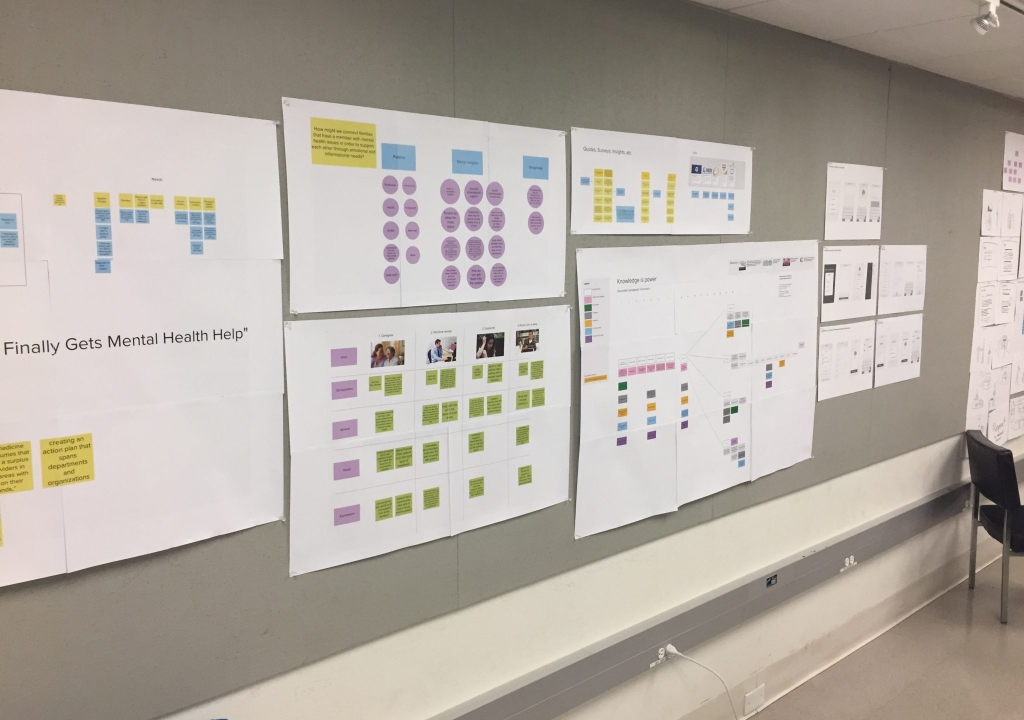In spring of 2017 I taught an intro studio about service design. Students were juniors and seniors in communication design. The first project explored mapping experiences and the second team based project explored mental health in rural communities. We did design research, blueprinting, journey mapping, wire frames, design development, and many other steps to arrive at proposed solutions. The class partnered with the Center for Innovation at BJC Healthcare and the students did final presentation to them and invited guests. One of the projects, called “OK Cards” was considered for testing with BJC’s clients in the field.
The full syllabus and project descriptions are at this link. Some of the class work is at this link.
++++++++++++++++
More about the studio from the syllabus description:
Services design is an interdisciplinary approach for creating useful, usable and desirable experiences between service providers and customers. Services have always been around: hospitality, transportation, health, restaurants, tourism and many others. At a macro level it is a strategic and systems level way of thinking that shares many of the tools used in “design thinking.” Today designers from many disciplines are engaging “services” at various touch-points where people interact with a service; advocating for people and creating designed artifacts that support successful experiences.
By the end of this course you will be familiar and comfortable with bringing high-level concepts into actionable visual solutions based on system level observations. The path is fraught with ambiguity, but you will become comfortable with using research methods to identify opportunities and insights. A human-centered approach will develop your sense of empathy and support visual form making skills that in turn create compelling service design experiences.
The class assumes that you are an advance communication designer with a grasp of typography, color, composition on screen and print. We will not discuss these in a fundamental way, but rather flex and practice our visual development competencies in the context of visualizing system level information and designing key touch points in a service experience. The class seeks to leverage your visual skills in tandem with strategic thinking needed to see whole systems. We will use “mapping” to visualize service experiences and opportunities that in turn identify the best channels such as print, web, mobile, or environments, to meet a customer’s needs. While you may design a print communication solutions we will seek to see where in the service experience it lives and why it is relevant.
There are many processes and “toolkits” for services design. All have slight differences and nuances, but generally follow a path of defining the problem, exploring through research methods, generating ideas through mapping and visuals, and realizing and testing your ideas. How deep we go into each of these will depend on the project scope, the make-up of your team, and a number of moving and unpredictable variables. The first short project is self-generated and second team based, applied with partners.
Why this course in this program? As a “designistraition” Communication Design (graphic design and illustration) program in the College of Art, you are all deeply engaged in and developing your skills in visual form. You tell stories and communicate ideas that are understood, insightful and enlightening in visual forms. This class gives you the opportunity to use those skills while imagining larger services type systems and applications. How does your [fill in with app, book, environment] really resonate with a larger system in which it lives? Does that thing you made really resonate and work in the services experience? Do the people using the tool really understand it as one element in the experience continuum? Do we really need it? While we cannot “test” the experience in full, we will aspire to come as close as possible.

